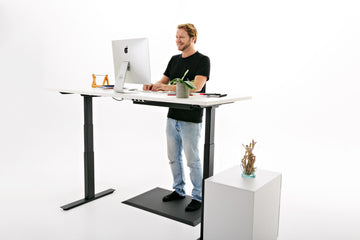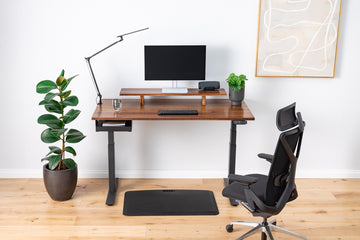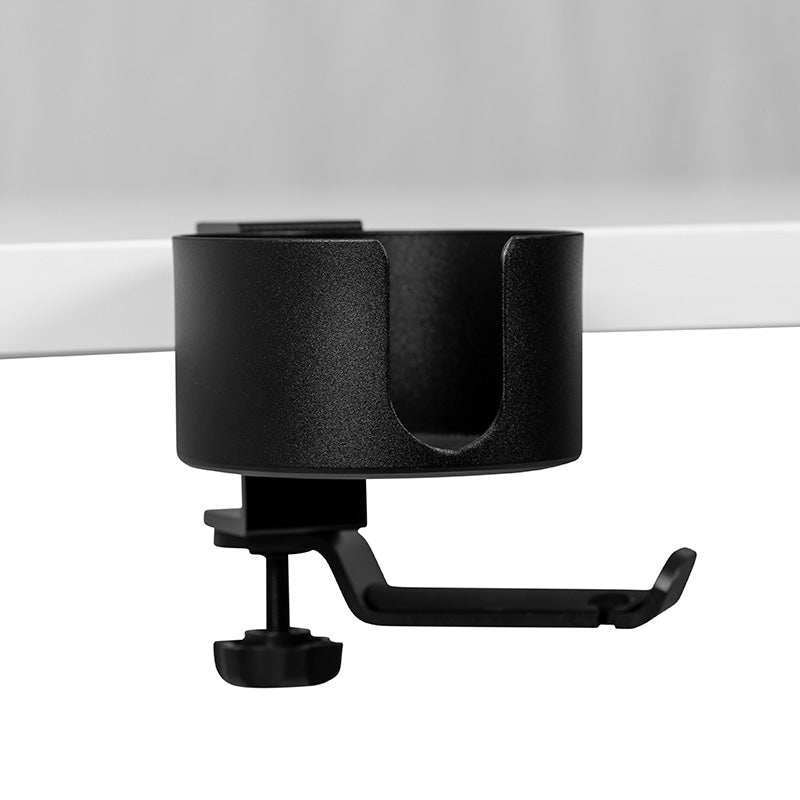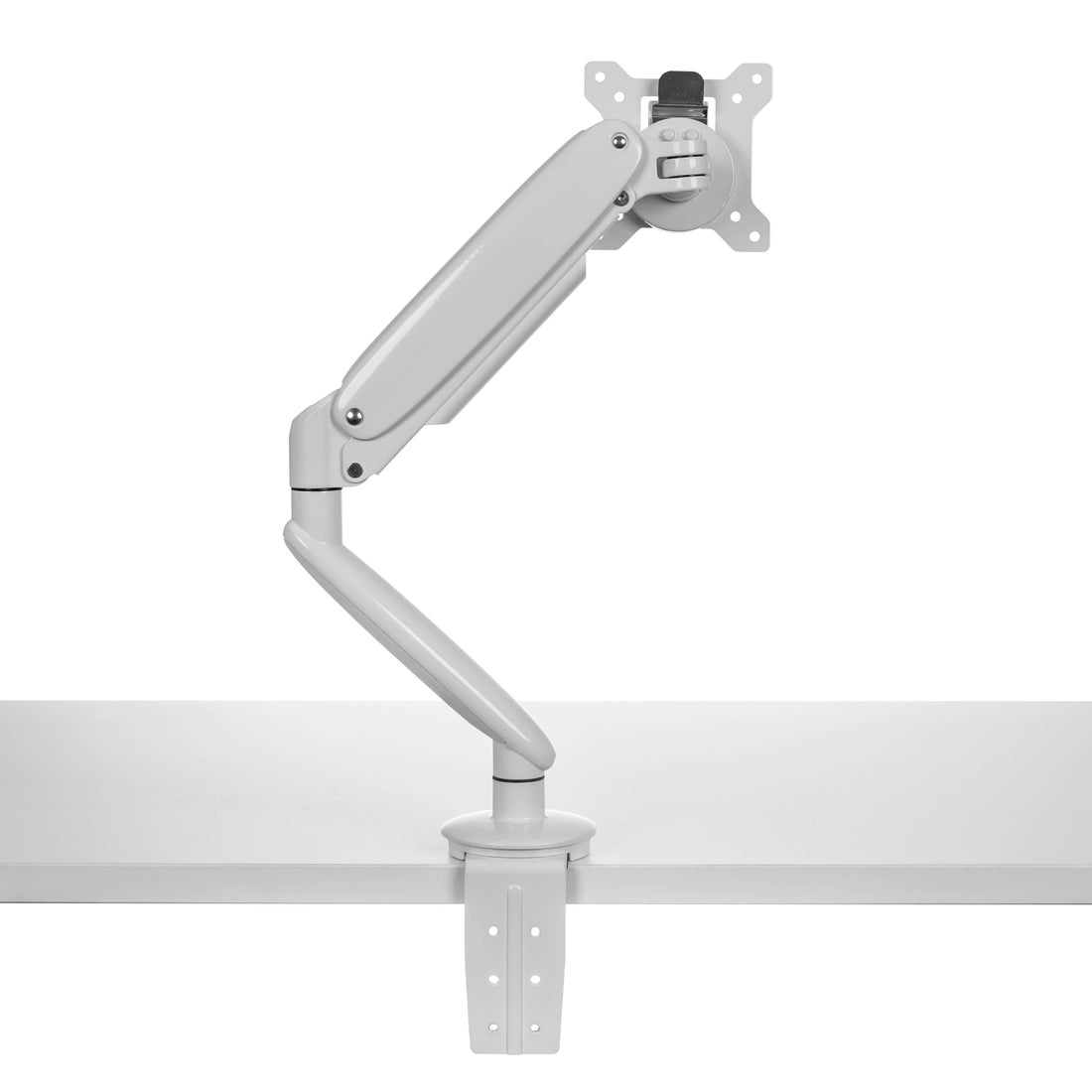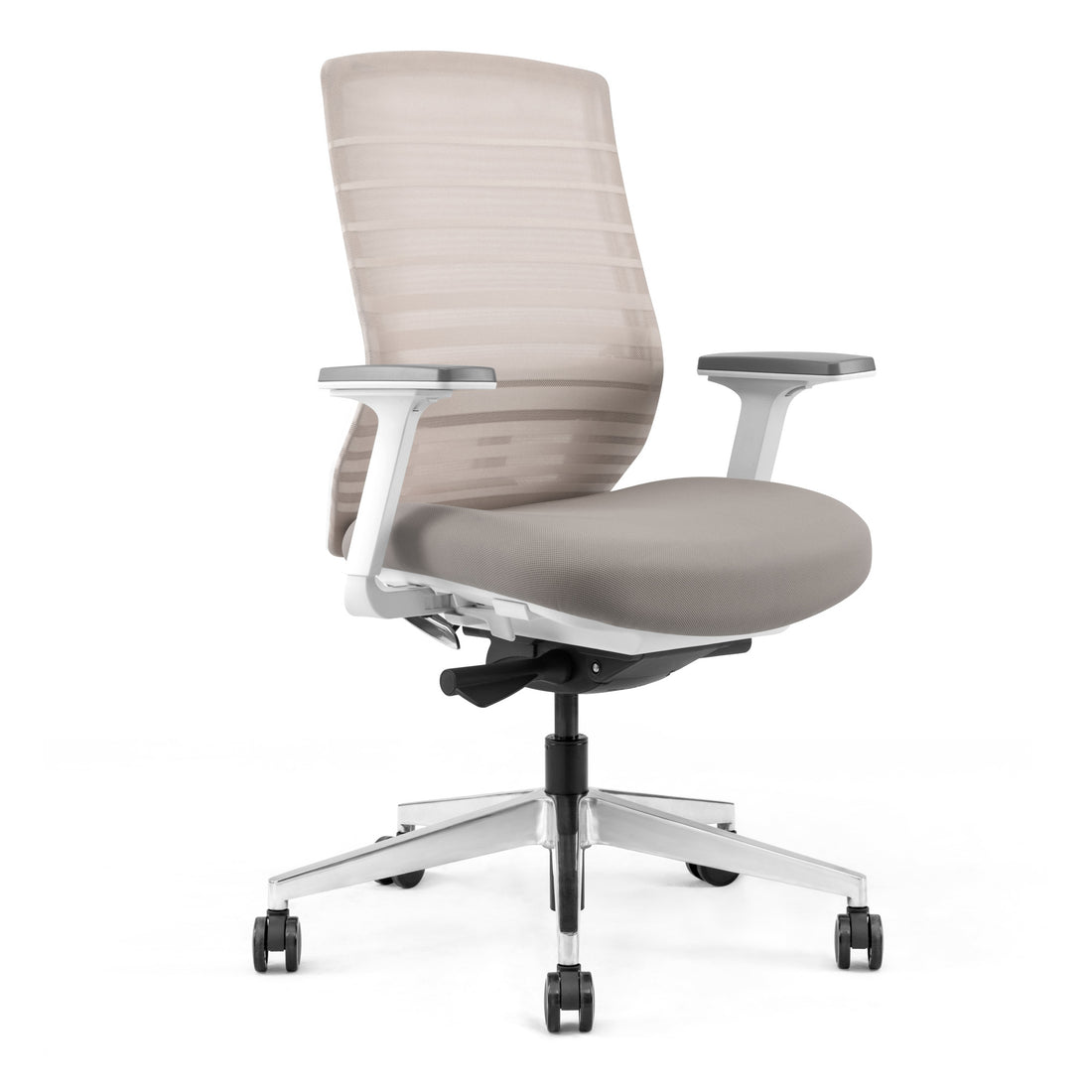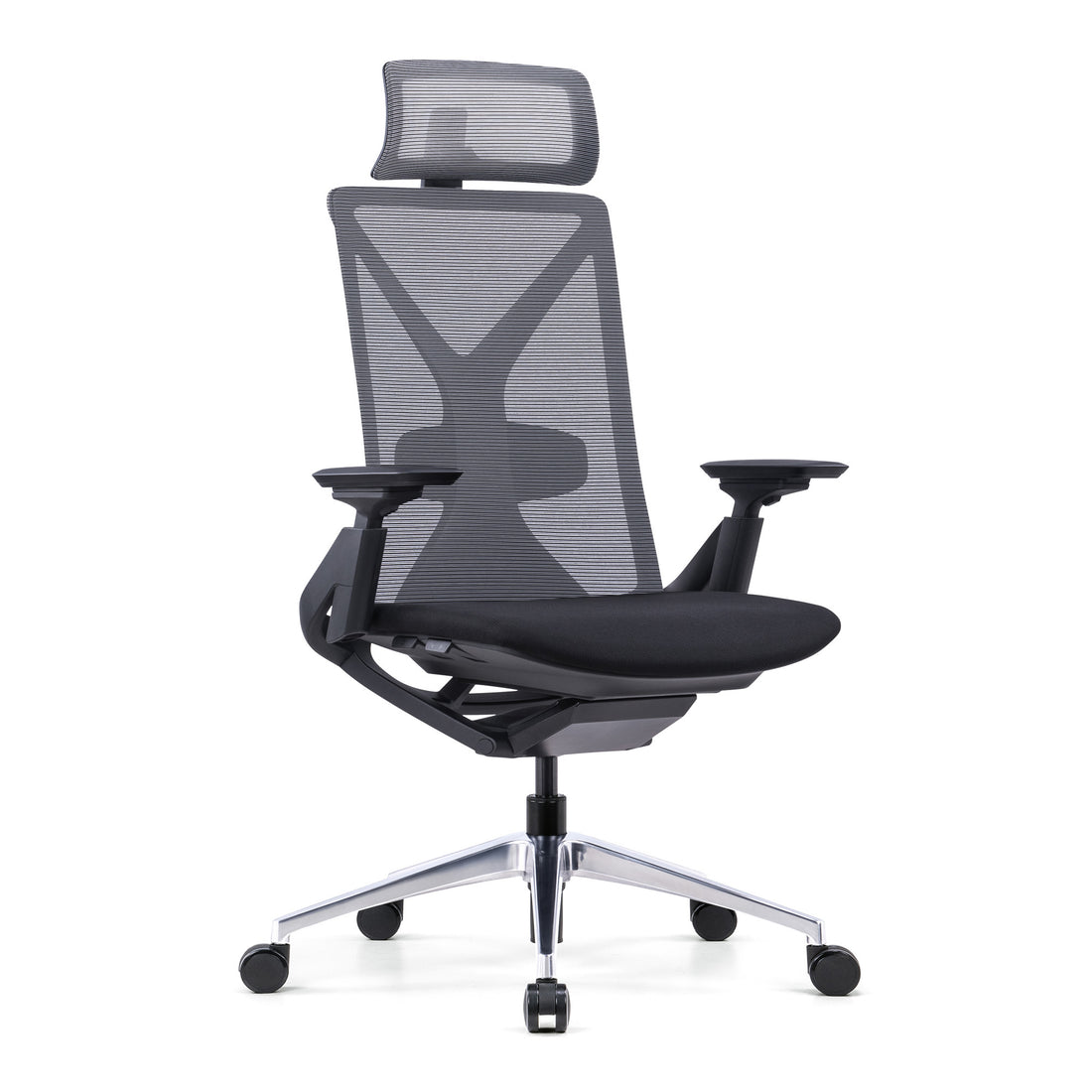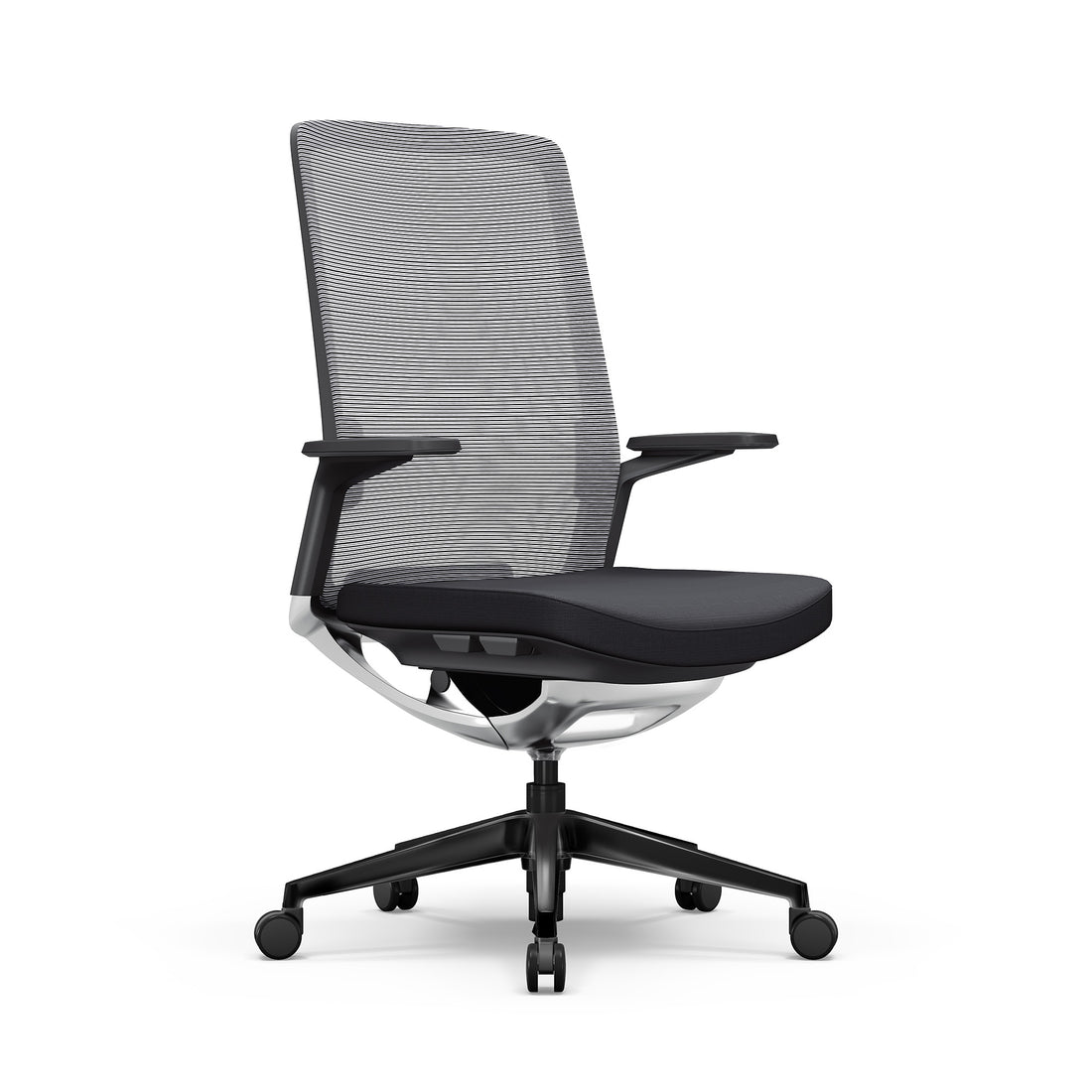Standing desks are a brilliant way to reduce the incidence of repeated stress injuries in the office workplace, because they can stop the accumulation of physical stress to the same parts of the body. They achieve this by providing an opportunity for you to change postures regularly throughout the day. Despite the benefits associated with standing desks, you should progress gradually, to allow your body a chance to get used to the new posture.

Here are my top 5 tips to consider when progressing to a standing desk:
Progress gradually
If you’ve been desk bound for some time, the muscles that are responsible for holding you upright will be somewhat deconditioned. When you add in a standing desk, these muscles will be required to wake up and actually do some work. As such, it is important to add in more standing gradually, to allow your body time to adapt to the new stresses. For specific guidance on how to do this, read the article How Long Should I Stand?
Don't stand all day
There is no need for you to stand for more than about 3-4 hours of your working day. This total time should be accumulated throughout the day, and not in one long bout of standing.
If you don't feel comfortable standing for a total of 3-4 hours per day, this is also completely fine. In fact, I'd encourage you to only stand for whatever period of time is physically comfortable for you.
And remember, don't start on 3-4 hours per day straight away. Progress gradually - even starting with 30-60 minutes standing per day is beneficial for you.
If you don't feel comfortable standing for a total of 3-4 hours per day, this is also completely fine. In fact, I'd encourage you to only stand for whatever period of time is physically comfortable for you.
And remember, don't start on 3-4 hours per day straight away. Progress gradually - even starting with 30-60 minutes standing per day is beneficial for you.
One thing that will help with standing for longer periods is an Anti-Fatigue Mat. You can click to read an article on Anti-Fatigue Mats by Jeffrey Caulfied, physiotherapist.
Learn your standing and sitting "threshold"
I teach my clients to learn their standing and sitting "threshold" to help them avoid staying in the one position for too long. This threshold refers to the length of time that you can comfortably sit or stand without feeling the need to change position.
Once you know your threshold, never allow yourself to sit or stand for this long. Instead, change position after 75% of this time. For example, say that you can comfortably stand for 30 minutes before you feel that you need to sit down. I suggest that you only stand for 75% of 30 minutes at any one time, or 22 minutes.
Once you know your threshold, never allow yourself to sit or stand for this long. Instead, change position after 75% of this time. For example, say that you can comfortably stand for 30 minutes before you feel that you need to sit down. I suggest that you only stand for 75% of 30 minutes at any one time, or 22 minutes.
Make sure your desk is set to the correct height
Having your standing desk set to the correct height will help ensure that no new musculoskeletal issues arise. See the article Standing Desk Height for how to do this. As a guide however, ensuring that the angle at your elbow is between 90-100 degrees is a good starting point.
Alternate your stance
I recommend alternating between several different stances regularly throughout the day. This will reduce the likelihood of any particular area getting sore from an increased physical load. You can view what stances I recommend alternating between in the article Standing Desk Stance Posture.
Please feel free to circulate this email amongst your colleagues or employees for injury prevention purposes.
For more information on standing desks visit www.updowndesk.com.au or for more information on ergonomic resources visit www.theergonomicphysio.com.au.
If you have any questions, please feel to email contact@updowndesk.com.au.

